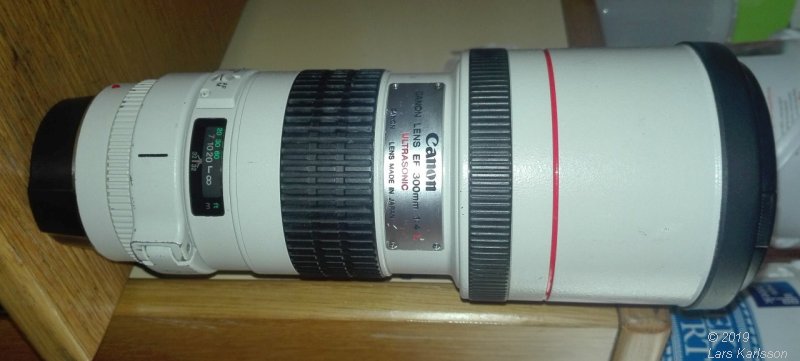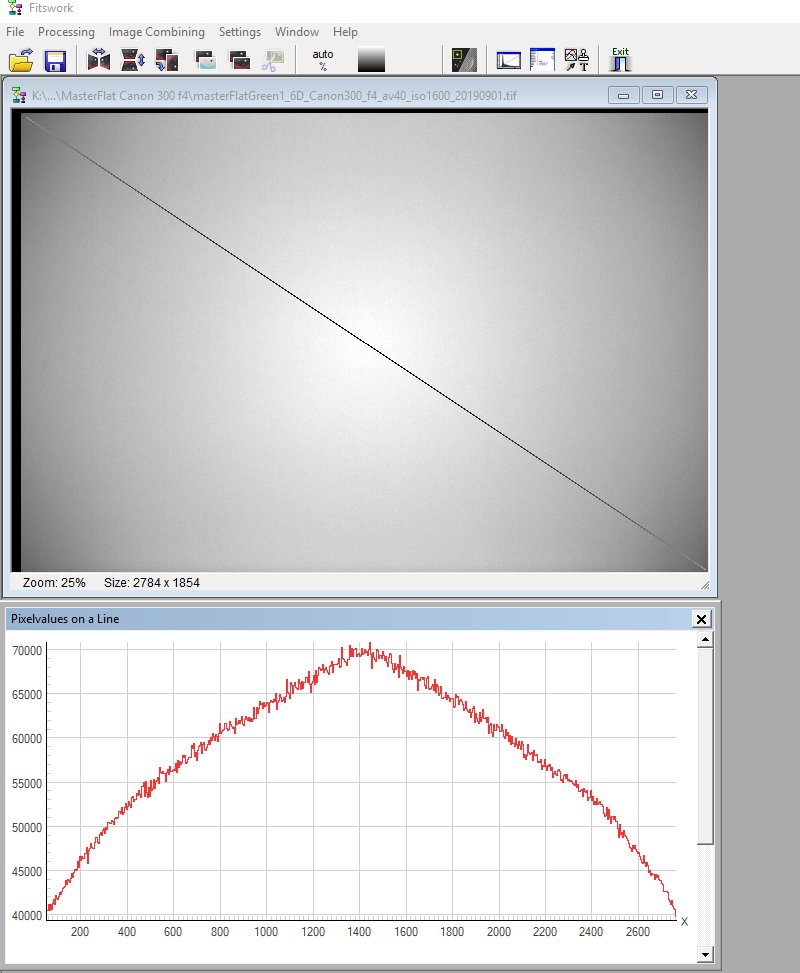|
Advertisement / Annons: |
Project:
|
Contents:
Note: |
5. Canon 300 mm f/4 L (f/4):
My latest lens, I bought this lens because I want something like a mini telescope. With a camera lens I don't have to bother about field flattener because it's already built in, and more, I can use the built in focus motor. My main purpose of this lens is to have it on my portable Star Adventurer. I'm not sure that this mount is good enough for this long focal lens but my first test was positive. 
It's sharp enough even at full aperture, at last for the moment I feel so. In center the signal is about 70'000 and at the corners about 41'000. The signal drop 42 % at the corners is significant lower compare to my Sigma 150 mm APO set to f/4, it drops 50 %. Signal drop at corners relative center = 42 % or 0.79 EV (full frame sensor). Canon 300 mm f/4 L: I have only done one astrophotography shot with this lens yet but it looks very promising. See the photo of Andromeda galaxy at full aperture.
|
|